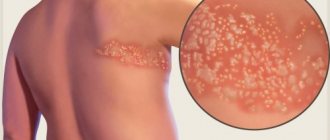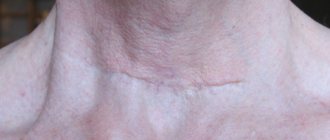How dangerous is white dot on a mole? A white spot on a mole does not cause problems if it is stable and their number does not change for a long period. For a correct diagnosis, it is better to contact a doctor, since usually such phenomena occur spontaneously, and it is quite difficult to independently identify the cause.
Alas, moles are not always beauty. It happens that they are a signal of the onset of the disease. In medicine, moles are called nevi; most often they form during fetal development.
What is a mole
The first tiny spots may appear in children in infancy. A mole is a small formation on the skin - a nevus - that is considered benign and harmless. The basis for their appearance is melanocyte cells that accumulate the natural pigment melanin. Depending on its quantity, a difference in color is observed. Available colors:
The shape of the tumors depends on the location and concentration of melanin. They may have a stalk or be located under the skin, be flat and convex. The most common type is round, but there are exceptions. The development of neoplasms is provoked by ultraviolet radiation - natural from the sun, in a solarium. Hereditary factors cannot be excluded. A common cause of growth is hormonal imbalance, characteristic of periods:
- puberty;
- pregnancy;
- menopause.
Who is at risk for degeneration?
Moles on the back may not develop into malignant ones in all people. In some cases, there is an increased risk of transformation of growths.
Read the article: Why does a mole appear on the nose?
Doctors identify a group of people most susceptible to this process:
- people who have white skin;
- tourists who arrived in hot countries or territories with a different climate;
- people who have a large number of moles on the left or right side of their back;
- owners of large growths;
- persons constantly sunbathing under the sun;
- having a genetic predisposition to the formation of melanoma.
It is worth remembering that if a mole has grown, you need to be examined by a doctor as soon as possible. There are also other signs that are worth paying attention to.
What types of moles are there?
One person may discover very different tumors. Types of moles are classified according to several criteria. This helps in correct diagnosis in case of changes. They differ in:
- origin – congenital, newly acquired;
- structure – pigmented, vascular;
- place of formation - in depth, on the surface, in the boundary layer;
- raised above the skin - flat - even, protruding as a hemisphere, pedunculated, larger birthmarks;
- potential threats - dangerous, degenerating into melanoma, non-dangerous.
Signs of melanoma formation
This is only possible if a person is predisposed to cancer or with repeated damage of a particular type. How can you damage the same mole several times? This is actually faced by many people with nevi located on the palms, soles and other unfavorable places. To be able to quickly see a doctor, read the signs of melanoma formation:
- one or more formations may become deformed (increase, decrease, change shape);
- fuzzy boundaries - they tend to blur and become inexpressive;
- education constantly bleeds;
- color changes: why a mole on the body changes color, becomes lighter or darker - this is one of the reasons for the growth of melanoma;
- it can become covered with a crust; not only a nevus can become covered - it can already have the status of melanoma, so immediately call the clinic and get the necessary advice;
- One of the moles may hurt or itch.
Safe moles
Those who have dark spots on their skin should be wary of their changes. In time, detected signs of degeneration into melanoma contribute to the timely removal of the formation and preservation of health. Safe moles are different:
- the presence of a stalk – it cannot be formed by malignant cells that grow randomly;
- long-term condition without changes.
Spots that appear shortly after birth are not considered dangerous. It is important that they are small in size. Good – non-dangerous – signs of neoplasms include:
- flesh tone;
- unchanged pattern of the skin of the nevus and adjacent tissues;
- soft consistency;
- hair on the surface of the neoplasm - growing from the skin, indicates the absence of pathologies;
- diameter no more than 5 mm;
- symmetry;
- nevus in the form of a spot.
Dots on a mole are black
In certain cases, the presence of black dots on a mole should not cause any concern, but under one condition - the absence of other symptoms.
This violation of color integrity is explained by a violation of pigmentation. As a rule, this occurs during the period of greatest solar activity, with abuse of solarium, as well as with disruption of the hormonal system.
However, in order to exclude any negative consequences, doctors still recommend undergoing a medical examination. It’s even better to remove the problematic nevus, especially since modern medicine currently has a number of advanced ways to get rid of them. And of course, this is simply necessary to do if, in addition to darkening, other changes in the birthmark are noted.
Which moles are dangerous?
Why do people with nevi on their bodies need to monitor their changes? There is always a threat of degeneration of non-dangerous tumors into a cancerous tumor. What moles are dangerous to health? Key signs you need to know:
- change in shades towards the dark side, the appearance of multi-color;
- rapid increase in size - exceeds two millimeters per year;
- occurrence of cracks;
- the formation of asymmetry due to uneven growth;
- lack of elasticity;
- the appearance of itching, burning;
- presence of discomfort.
The appearance of dangerous moles requires an immediate visit to a specialist to clarify the nature of the changes and the likelihood of developing skin cancer. Pathological transformations provoke:
- injury to the nevus due to negligence;
- self-removal;
- abuse of exposure to the sun, use of a solarium;
- location of the formation in places of frequent contact with clothing - on the neck, head, genitals, legs;
- placement in the hair, on the face, palms - where there is a high probability of injury;
- previously removed melanoma.
Localization and possible pathologies
Light birthmarks can appear on any part of the human body. However, most often a white mole is found on the head, neck, armpits, back, and intimate areas. In addition to the area of the body, they can have different depths:
- Deep location in the dermis. They have a convex shape. The surface is smooth or rough. Coloration varies from flesh-colored to dark brown. Often such moles are covered with hairs. There is no need to be afraid of this; this is a sign of their good quality.
- Located in the upper layers of the epidermis. They have a flat shape. Color can vary from light brown to almost black. Formed in intimate areas, on the legs and palms.
- Located between the top and bottom layers of skin. Presented in the form of a circle or oval, with clearly defined boundaries. Under the influence of ultraviolet rays or hormonal imbalance, they can change their shape to a more convex one. There are no hairs on such a mole, the surface is not rough or uneven.
The popular interpretation says in which place the light nevus formed, in that place there is an organ in which inflammatory processes occur. However, the formation of colorless moles may indicate that this area of the body is subject to constant mechanical stress. For example, it is rubbed by tight clothes or shoes, injured by jewelry, or torn off during shaving. As you know, any damage can be accompanied by an inflammatory process, as a result of which a benign formation will develop into a cancerous tumor.
Why are moles dangerous?
Not a single person is protected from the sudden proliferation of cells of a harmless mole. Melanoma is an extremely serious disease. Changes not detected at the initial stage can result in death. The provoking factor is unsuccessful independent removal of tumors. Moles are dangerous because of their ability to:
- transform into an atypical – precancerous form;
- grow to large sizes;
- turn into cancerous;
- with minor external changes, metastases actively spread throughout the body through the circulatory and lymphatic channels.
Symptoms of the appearance of white dots on a nevus
You cannot diagnose yourself, but in the initial stages, when a white dot appears on a mole, it is quite possible to understand whether this manifestation is malignant:
- The mole becomes asymmetrical and loses its clear outline;
- There is no obvious reason for this manifestation;
- When pressure is applied, pain appears and soon becomes permanent;
- The mole gets bigger;
- Periodic bleeding from the neoplasm, itching;
- The appearance of new nevi with similar whitening.
These symptoms appear when the tumors are malignant. You should contact the oncology clinic.
What dangerous moles look like
What do nevi that are subject to pathological changes look like? Only a doctor can correctly distinguish between non-dangerous tumors. Dangerous formations look like this:
- blue – seals under the skin with clear boundaries, with dimensions no more than 10 mm;
- nodal – round, flat in shape, color – brown, black;
- skin – often pale, convex;
- halo nevus - pigment surrounded by a light or white rim;
- Spitz - looks like a dome-shaped tumor of pink shades, with the possible presence of a hole through which blood and fluid leaks;
- connective - connect individual formations into a whole.
Mole with jagged edges
One of the signs of a non-hazardous formation turning into a dangerous one is a change in contours. It often has blurred edges and scalloped borders. There are non-dangerous types of nevi - dysplastic. Only a specialist can make a correct diagnosis. A mole with uneven edges can be dangerous if there are additional signs of melanoma:
- accelerated changes in size;
- the presence of clearly defined asymmetry;
- the appearance of highly indented boundaries.
Rough mole
Such a neoplasm is harmless if its diameter is no more than 5 mm and remains constant in size. Often its appearance signals a lack of vitamins and nutritional disorders. Doctors advise coming for a consultation if it is discovered that:
- the smooth nevus turned into a rough one;
- bothered by burning, itching, tingling;
- irregularities and compactions appeared in the middle;
- areas with different shades formed;
- diameter has increased significantly.
A dangerous rough mole requires immediate examination if:
- the appearance of bleeding;
- development of the inflammatory process;
- rapid change in size;
- formation of asymmetry;
- formation of purulent discharge;
- the occurrence of painful sensations when touched;
- the emergence of an irregular shape, blurred boundaries, along the edges of the neoplasm.
Large moles
Large formations on the skin are pigment spots. When they remain unchanged and do not cause inconvenience, this is not a dangerous phenomenon. It is important to constantly monitor their appearance, color, and size. To eliminate worries, you need to consult a dermatologist. During the visit, the specialist will conduct a diagnosis and give a forecast of the risk of developing a malignant neoplasm. Large moles become dangerous if they:
- injured;
- thickened;
- started to itch;
- were unsuccessfully removed independently;
- changed in size, shape;
- are bleeding.
Is it possible to squeeze out a mole with a white spot in the center?
The formation of a white core in a mole is not always alarming. Many people make the mistake of trying to squeeze it out. With superficial damage, internal tissues can be injured. If the process spreads to the subcutaneous fat layer, an abscess may develop. The active growth of the purulent focus begins. Necrosis often forms in its center.
There is pain and swelling of the nevus itself and the skin around the affected area. Such changes several times increase the risk of malignancy of an initially benign growth.
When squeezing out the formation, a person can introduce an infection inside. Inflammation that develops after the incident is another risk factor for malignancy. It cannot be ruled out that after squeezing the pimple will not appear again. The area of the rash may increase significantly.
What moles can be removed
Often nevi cause trouble for women when they are in a visible place - the face, neck. Even if they do not bother you, using removal will be the right decision - the appearance will improve significantly. After the procedure, the doctor must send the tissue for histological analysis to decide whether the mole is malignant or not. If the neoplasm is not dangerous, does not bother you, and does not change in size, surgery is not required. What moles cannot be removed? Experts believe:
- there are no contraindications;
- It is important to choose the right excision technique.
More about the concept
Moles or nevi (the scientific name for birthmarks) come in two types.
- Congenital. The appearance of moles on the body occurs in the first months of a person’s life. In this case, people do not show interest in them, which cannot be said about the next type.
- Purchased. Sooner or later, a person discovers previously unseen marks on himself. New moles on the body may raise the question of what the body is signaling about, but often this does not foretell any signs.
Melanin is believed to be the reason why new moles appear.
Melanin is a coloring element that, when increased, can cause new marks to appear on the body. Now let's move on to analyzing the factors that can affect the increase in this hormone.
Where do moles come from?
Another popular name for moles is birthmarks. Although not all marks appear on the body immediately after birth. A nevus is a dermal pigment defect that is formed due to the accumulation of blood vessels or melanin cells at one point. The first marks begin to appear on the baby’s body after 6 months. With age, the number of moles may change to a smaller or larger extent. The number of nevi increases rapidly during hormonal changes in the body - during puberty.
Environmental factors can influence the development of nevi. First of all, these are ultraviolet rays. Many people may notice how the mole has enlarged after the summer. People with fair skin are not recommended to sunbathe at all. The risk of developing melanoma in such patients is significantly increased. Even if it is necessary to go out into the open sun, it is worth applying a cream with a high level of ultraviolet protection to the skin with nevi.
The hereditary factor also plays a role. If parents have a large number of moles on their body, the child is likely to have this feature as well. Regular preventive examinations are recommended for people whose relatives have died from melanoma.
It is worth understanding that moles are always benign neoplasms. However, a number of negative factors can provoke malignant degeneration of a nevus. If a mole swells or changes color, it is unsafe. Timely seeking help from a specialist will save your life.
Possible complications
Formations of a benign nature, even with white inclusions present, may not cause inconvenience to a person throughout his life. The danger lies in the malignancy of the mole, but the degeneration is preceded by a number of factors that are impossible not to notice.
To prevent malignancy, several recommendations should be followed:
- tanning should be moderate. Long-term exposure to ultraviolet radiation (UV rays) and frequent visits to the solarium are one of the causes of degeneration;
- It is forbidden to squeeze out white formations on nevi, comb them, or tear them off;
- It is necessary to eliminate bad habits, reduce the amount of coffee consumed, and avoid stress.
Numerous moles on the body require careful attention. The appearance of unpleasant, disturbing symptoms is not always a sign of the development of melanoma, but, most likely, an indication of malfunctions in the body. Understanding the mechanisms of malignancy of nevi, preventive examinations, and a healthy lifestyle will protect you from troubles with moles, even if they have white dots.
How dangerous is a white dot on a mole ? A white spot on a mole does not cause problems if it is stable and their number does not change for a long period. For a correct diagnosis, it is better to contact a doctor, since usually such phenomena occur spontaneously, and it is quite difficult to independently identify the cause.
Alas, moles are not always beauty. It happens that they are a signal of the onset of the disease. In medicine, moles are called nevi; most often they form during fetal development.
Convex mole
Such neoplasms appear less frequently on the body, but due to their shape they are more frightening to patients. The correct name for such marks is intradermal nevi. The tumor rises above the skin and can grow throughout life. The color range of such neoplasms is quite diverse - from flesh to dark blue. Many people may confuse skin-colored pendulous with an intradermal nevus. Most often in this case we are talking about papillomas. Only a dermatologist will be able to determine exactly what kind of neoplasm he was faced with after conducting a series of studies.
If a birthmark appears in the first years of life and increases evenly as the child grows older, there is no reason to sound the alarm. Only a rapid change in the tumor can be alarming.
Blue nevi deserve special attention. These are convex neoplasms that have a blue tint. Such marks most often appear at the age of puberty (13-17 years). The most common locations are the buttocks, face, and limbs. Blue nevus, like other neoplasms acquired with age, are at greater risk of malignant degeneration. It is recommended to periodically show such moles to a dermatologist.
Why does the mole bleed/hurt/swell/swell?
There are many reasons for bleeding from moles. Because every tear in a birthmark is a consequence of a domestic injury. If you are a person who has a fair amount of raised growths, you should be careful. In everyday life, the reasons may lie in simple actions, for example:
- The woman's underwear caught or pressed tightly against the mole.
- Rubbing due to the compressed belt, collar on your skin.
- Children love to explore themselves. When a baby sees a mole, he or she may start picking at it. The result is bleeding and a broken spot.
- They were injured by a razor, a knife, scissors, a machine.
- Injury while working with construction materials.
Has the reason been found out? A mole, like our skin, when it is traumatized will spew blood, hurt, pinch and swell. Remember when you fell on your knee - you started bleeding and the clogged area hurt. Moles react the same way.
If the injury is in the nature of mechanical damage, there is nothing to be afraid of. It will be enough to treat the wound and seal it with a band-aid. This way, a crust can form and return the mole to its place. But do not delay seeing a doctor if it does not heal for a long time and hurts for a long time. These may be symptoms of serious illnesses.
Signs of malignant degeneration
Melanoma is a dangerous malignant tumor that can develop from a simple nevus. The problem is that such a tumor can grow rapidly. If you do not pay attention to the changes occurring in a timely manner, the likelihood of death increases.
Melanoma develops due to the rapid proliferation of pigment cells (melantocytes). Most often the disease affects the skin, but can also occur on the mucous membranes. Tumor cells can quickly spread throughout the body, often developing metastases. An irreversible process begins. Mortality from melanoma reaches 70% of all cases. A patient’s life can be saved if a malignant tumor is identified and removed in a timely manner. Therefore, it is so important to know the main signs of nevus degeneration. If a mole begins to increase in size, this is an alarming signal.
The risk of developing melanoma is much higher in people with fair skin. In patients of the Negroid race, pathology practically does not occur. However, dark-skinned people should also be careful about their birthmarks. The main risk factor that provokes malignant degeneration of nevus is ultraviolet radiation. People with a hereditary predisposition are at risk. Regular trauma to the formation can also lead to its malignant degeneration.
Reasons and features of the appearance
Red dots on the body, like moles, are often congenital; their appearance is caused by impaired functionality of the body as a result of ailments that the mother had during pregnancy. Neoplasms no larger than 1 cm in size often disappear on their own without medical intervention.
It has been proven that adults with fair hair and white skin are more susceptible to the appearance of such moles.
The reasons for the appearance have not been studied, although experts put forward several theories:
- hormonal problems;
- mechanical injuries;
- liver dysfunction;
- lipid metabolism disorder;
- abuse of exposure to UV;
- autoimmune diseases;
- red nevi are a sign of hemophilia;
- heredity.
The appearance of new spots should attract attention; this may be the cause of the disease. You need to get rid of spots if they begin to become inflamed, itchy, or take on a hanging appearance. The method of elimination will depend on what form of formation the patient has. If it is a convex vascular nevus, medication, limiting exposure to sunlight, and visiting a solarium can help. You can use traditional therapy, but there is no guarantee that the growth will disappear.
Inflammation of the neoplasm
If a mole has increased in size, this does not mean that the patient will be given a fatal diagnosis. It is likely that I had to deal with a simple inflammation of the neoplasm. The reasons for this condition can be very different. Most often, trouble occurs after injury. Convex moles located on the neck, face, and armpit are susceptible to inflammation. The tumor can be damaged during depilation, when using jewelry, etc.
Diagnosing inflammation of a mole can be quite simple. Unpleasant changes begin to occur with the nevus. It increases in size and a red rim appears on the skin. The main symptom is pain. If a mole is affected by a bacterial infection, pus may be released from the growth. Such a tumor will definitely swell.
If a mole is swollen or other signs described above appear, you need to rush to the doctor. The dermatologist must first rule out malignant degeneration of the tumor. Consultation with an oncologist may be required. If dangerous degeneration was not encountered, anti-inflammatory therapy will be prescribed. Regenerating ointments are most often used. If the wound has a bacterial infection, external agents with an antibiotic can be used. The broad-spectrum ointment Levomekol shows good results.
With each damage to a mole, the likelihood of its malignant degeneration increases. If the nevus is located in an “inconvenient” place, the specialist will recommend removing it surgically. There are several surgical options. In public clinics, simple excision with local anesthesia is used. The mole is cut out with a scalpel, affecting a small area of the epidermis. Laser removal or surgery using liquid nitrogen is considered less traumatic.
After removal, the tumor is sent for a biopsy to make sure there are no malignant cells.
The presence of any hanging formations or convex nevi on the body is a reason to undergo a preventive examination by a dermatologist once a year. With a timely diagnosis, life can be saved.
Treatment methods for white areas on nevus
When changes in moles in the form of a white spot are not a pathological manifestation, then there is no need to undergo intensive treatment. Therapy is usually sufficient. It is recommended to take it in combination with vitamins and general cosmetic procedures to improve the condition of the skin.
When changes in such formations are malignant, then timely contact with an oncologist will help prevent more serious consequences. First, the doctor will determine the nature of the nevus. The status is determined using a puncture. Samples are taken from the neoplasm. If the test result is positive for oncology, the doctor prescribes special general therapy. The next step is external therapeutic actions:
- Surgical excision;
- Cryo removal;
- Getting rid of a nevus with a white dot using a laser;
- Radio wave removal.
If a mole is malignant, it is strictly forbidden to remove it, as this can lead to numerous oncological complications. Further relapse of the disease cannot be ruled out.










